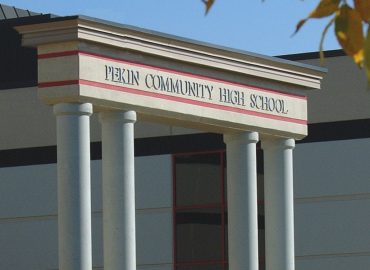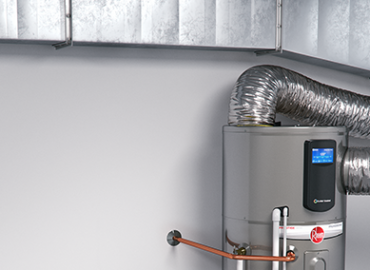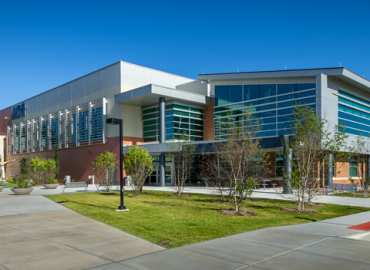Hotels
In 2007, a survey commissioned by the Element extended-stay brand of Westin Hotels found that 59% of frequent travelers (minimum of three hotel stays in past 12 months) admit to slipping from their typical “green routines” during their hotel visit. The survey found that when staying at a hotel, 75% of travelers expect fresh sheets and towels daily, 63% are more likely to leave a light on when absent from their hotel room than at home, 70% open a new mini-bottle of shampoo/conditioner every time they shower, and 62% said that they are less efficient with their energy and water use in a hotel because they
“don’t have to pay for it” like they do at home.
As a hotel designer or manager, it is challenging to directly control how many towels your guests use or how many lights they leave turned on, but there are many steps you can take to ensure that you are running an efficient building. The most important categories to consider for improvement are: building
envelope, lighting, HVAC (heating, ventilation and cooling), and water consumption. Naturally, the amenities that your hotel offers will significantly influence its energy use patterns. A hotel that has an indoor pool, sauna, Jacuzzi, and/or restaurant will have a different energy profile than a hotel offering
only guestrooms. Thankfully, there are energy-efficient opportunities for these additional amenities, too.
Utility costs represent a significant portion of a hotel’s operating costs. Space conditioning (heating and cooling), water heating, and lighting alone can represent up to 80% of a hotel’s utility bill. Energy-saving opportunities abound and realizing these savings not only improves the business’s bottom line but can also improve comfort conditions for guests. In fact, a 10% reduction in energy costs is equivalent to increasing Average Daily Rate (average dollar amount paid per customer per night) by 2.6% and increasing Occupancy Rate (percent of rooms occupied at any given time) by 4.3%.
At SEDAC, we are determined to help you find the best energy options for your hotel. This brochure explains the steps to take and the systems to implement so that you may provide a comfortable and efficient environment for your valued guests.
BUILDING ELEMENTS TO CONSIDER FOR OPTIMUM ENERGY EFFICIENCY
The four pie charts come from an Environmental Protection Agency document titled Sector Collaborative on Energy Efficiency Accomplishments and Next Steps: a Resource of the National Action plan for Energy Efficiency (July 2008). The charts illustrate how U.S. hotels consume energy. It is important to note that the largest user of electricity is lighting and the largest user of natural gas is water heating. These following suggestions can help you cut costs by implementing energy-efficient options for your hotel.
BUILDING ENVELOPE
The building envelope includes all partitions that seal indoor spaces from outdoor air and temperature (windows, doors, walls, roofs, foundations).
- Replace worn weather-stripping and caulking to ensure windows and doors are airtight.
- For new construction, consider using super-insulated walls (typically R40).
- Install high-efficiency doors and windows when possible to avoid heat loss and infiltration.
- Choose windows with a low U-factor (rate of heat loss), low-emittance coatings (transmit light and control heat gain and glare, reduces ultraviolet rays responsible for fading fabrics), and/or low conduction gas filling.
- Reduce solar radiation and conditioning costs by shading windows (add roof overhangs or louvers, plant trees near windows, etc.).
- Upgrade to a “cool roof” to avoid high cooling equipment operation costs: apply a special coating to reflect solar radiation and reduce surface heating. Cool roofs are especially beneficial in cities to reduce the heat-island effect and in hot, sunny climates.
WATER USE
To save water, install these upgrades:
- Low-flow shower heads (1.5 gallons/minute, cut use by at least 50%).
- Low flow toilets (use 1-1.6 gallons per flush rather than 5-7 gallons).
- Install aerators on faucets (0.5 gallons/minute, save 3-17 gallons/day per faucet).
- Install de-superheaters to redirect waste heat from the cooling system, or use grey-water heat recovery piping to preheat water.
HVAC
HVAC systems physically affect guests’ wellbeing in your hotel, so it is important to choose a system that both reduces energy consumption and improves comfort.
- Install a central air-conditioning system rather than individual room units so that hotel operators can control set-points and monitor performance. The type of system used will depend on geographic location and building requirements, so consult an HVAC professional to determine what system is best for your hotel’s needs.
- If rooms have individual thermostats, limit the temperature range to avoid extreme temperatures (60F minimum in summer and 80F maximum in winter).
- Install efficiency controls: electronic thermostats adjust the temperature based on programmed occupancy periods, and computerized energy management systems control energy use based on occupancy, weather, time of day, etc.
- Add variable speed drives to control air handling motors and pumps.
- Conduct regular equipment maintenance: prevent energy losses caused by dirt or pipe/duct leakage, and extend equipment life by regularly cleaning condensers, intake louvers, evaporator coils, and air filters; develop a routine maintenance check-list to insure peak efficiency.
LIGHTING
In a large hotel, energy usage for lighting can add up to 30% of total energy consumption. Efficient lamps, luminaires, and controls will save money and improve lighting in the hotel
- Replace incandescent and florescent lamps with high efficacy LEDs
- Install lighting controls to avoid lighting spaces that are not in use (i.e. key-activated lighting in guestrooms, occupancy sensors in restrooms and storage rooms, dimming systems that adjust according to daylighting or event requirements).
- For outdoor lighting, LEDs can save significant energy by replacing highintensity discharge lamps (i.e. lowpressure sodium) and are lower maintenance. Install photosensors to automatically activate lamps when daylight diminishes, and place motion sensors in lesser-used areas.
- Conduct routine maintenance: clean and replace lamps on a fixed schedule to avoid dirt and dust build-up and to insure full-light output.
- For new construction, strategically place windows in guestrooms to take advantage of natural lighting.
- Replace signage and exit lamps with LEDs (exit lamps consume 5 watts/fixture and last up to 10,000 hours maintenance-free).
EXTRA TIPS FOR FULL SERVICE HOTELS
POOLS AND SPAS
If your hotel has an outdoor or indoor pool and hot tub, install a thermal pool/spa cover when not in use to prevent constant heat loss or excess indoor humidity levels. Verify that heaters are functioning properly by regularly checking water temperature. Older heating units can also be replaced by a solar pool heating system to reduce water heating costs.
VENDING MACHINES
Upgrade to modern machines with improved insulation and more efficient cooling units. Also consider adding controls with infrared sensors to reduce lighting of machines when no one is around.
OFFICE EQUIPMENT
Use flat-panel LCD computer monitors which consume up to 90% less energy than traditional monitors. Set printers and copiers to “sleep” mode when not in use. Use recycled paper whenever possible and remember to check for ENERGY STAR® qualified equipment.
RESTAURANTS
To learn how to save energy in your restaurant, read SEDAC’s Energy Smart Tips for Restaurants brochure. Also look for ENERGY STAR qualified appliances.
LAUNDRY SERVICES
In smaller hotels, upgrade your laundry facilities to ENERGY STAR® qualified washers and dryers. These machines use less water and consequently require less energy to heat, and they also increase water extraction during the spin cycle so that less dry time is required. Larger hotels have more options to choose from regarding laundry appliances since the cost of modern machines can be paid back more quickly. Ozone laundry systems are high-efficiency machines that inject ozone into the cleaning process, thereby requiring less hot water and cleaning chemicals. Air-to-air heat exchangers can also be added to dryers to recover heat from the machine and use it to heat incoming air. This system cuts dryers’ energy requirements by up to 50%.





